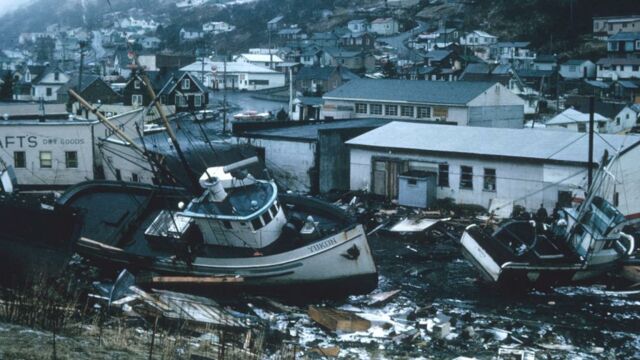Natural disasters are terrifying things. The human race has made so many advances over the years that we are now at a stage where we can protect ourselves from most risks. Scientists even claim there could be a cancer vaccine by 2030! However, solar storms, hurricanes, earthquakes and tsunamis remain much more powerful than us. Now, a shocking discovery has uncovered a new threat.
Discover our latest podcast
Scientists have found a fault line that exists along Canada’s Vancouver Island that no one had ever noticed before. Here’s how they found it, and how it could cause a tsunami that would put the lives of hundreds of thousands of people at risk.
How scientists found the fault line
Evidence recently surfaced that suggested an earthquake had occurred in that same spot, just north of Washington State in the US, some 2,300 years ago. Scientists searched for the fault line, which was hard to find because of the area’s dense woodland. However, using ‘high-resolution topography and geologic mapping’, they succeeded.
Now there are fears that the fault line could trigger another earthquake that would consequently bring on a ‘catastrophic’ tsunami. The team of researchers, comprised of specialists from France, America, and Canada, wrote:
This newly identified fault, the XEOLXELEK-Elk Lake fault (XELF), crosses Saanich Peninsula within Greater Victoria and poses a hazard to the region's [approximately] 400,000 inhabitants.
The fault line is thought to be around 45 miles long, so estimations suggest that any tsunami triggered could impact Victoria and Vancouver in Canada and even reach cities in the US, such as Seattle.
How this fault line could cause a tsunami
According to Climate Policy Watcher, ‘tsunami earthquakes are generated by large displacements that occur along faults near the seafloor’. This leads to vertical shifts of the seafloor that cause the water above to follow, bringing about a massive surge that gains momentum as it moves.
The most destructive tsunamis are ones generated from large, shallow earthquakes with an epicenter or fault line on the ocean floor - so this scenario is the perfect storm. Indeed, the scientists who made the discovery believe that the last earthquake to occur on the fault line may have caused a tsunami thousands of years ago. They added:
Future analyses of the subaqueous structures, along with exploration for regional tsunami deposits, could further test this hypothesis.
These tests are ongoing, so for now there is no reason to panic, though it is quite a thought for those living nearby!
Read more:
⋙ Do we need to eat more in winter? Scientists give their answer, and it's not what you think
⋙ Scientists discover the coldest place in the Universe, here's how low the temperatures actually get
⋙ Scientists reveal this popular hobby will change the shape of your hands (VIDEO)
Sources used:
ClimatePolicyWatcher: Earthquake Induced Tsunamis
DailyStar: 'Catastrophic tsunami' could wipe out 400,000 people after scientists' chilling discovery















